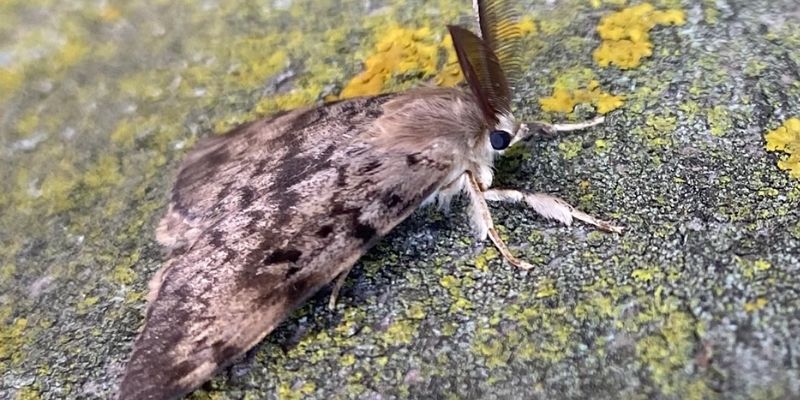Named for their soft and ‘spongy’ egg cases, Spongy Moth, Lymantria dispar, is also known as LDD moth and formerly known as ‘gypsy’ moth.
Brought to Medford, Massachusetts from Europe in the mid 1850s, Spongy Moths were bred with other silkworms to create a new variety to spur a silk industry in the US. Though that industry never materialized, a few moths escaped in 1868 and they’ve spread wide ever since.
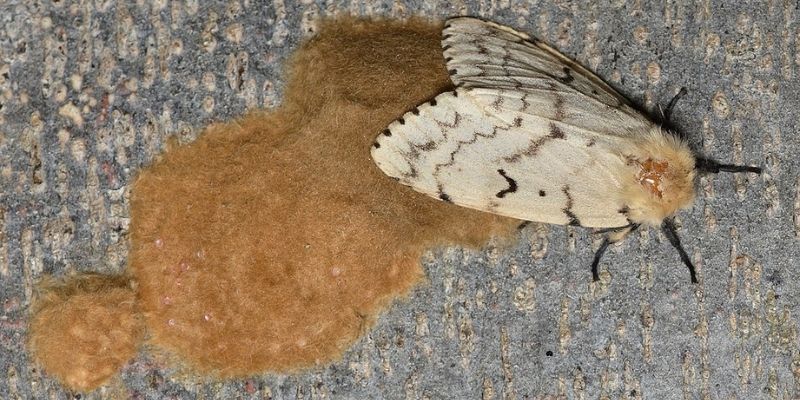
Here are two offerings, a quote and a poem, that fit well for late spring, Spongy moths and sitting with the depth of our decisions before we act:
Look closely at nature. Every species is a masterpiece, exquisitely adapted to the particular environment in which it has survived. Who are we to destroy or even diminish biodiversity?
~ E O Wilson
Instructions on Not Giving Up
More than the fuchsia funnels breaking out
of the crabapple tree, more than the neighbor’s
almost obscene display of cherry limbs shoving
their cotton candy-colored blossoms to the slate
sky of Spring rains, it’s the greening of the trees
that really gets to me. When all the shock of white
and taffy, the world’s baubles and trinkets, leave
the pavement strewn with the confetti of aftermath,
the leaves come. Patient, plodding, a green skin
growing over whatever winter did to us, a return
to the strange idea of continuous living despite
the mess of us, the hurt, the empty. Fine then,
I’ll take it, the tree seems to say, a new slick leaf
unfurling like a fist to an open palm, I’ll take it all.
Ada Limón 1976-
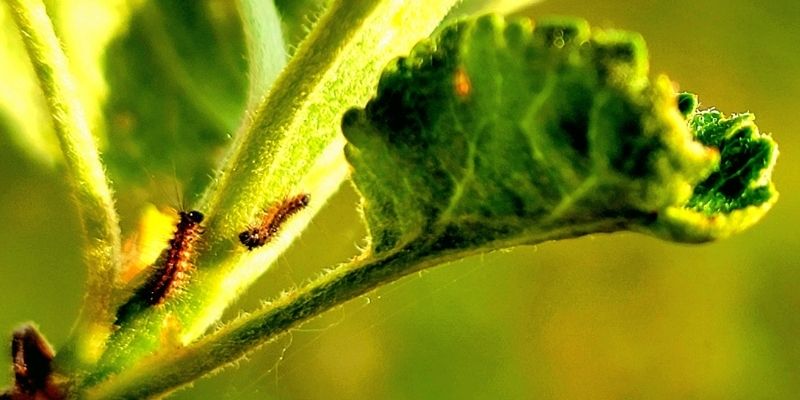
Spongy moths, now present in our ecosystem, can significantly defoliate our forests and orchards every few years. Young apple trees are especially prone to their munchings. We’ve thankfully found them largely disinterested in our garden vegetables, though in 2021 we had ravaging populations defoliating forests around us and spongy moth caterpillars took a liking to our pole beans, which we squished daily. In addition to ravenous munching, the hairs of Spongy moth can irritate skin for some people.
Spongy Moth Damage
Known for their cyclical 10-15 year boom/bust episodes, Spongy moths are more often in our orchards munching, compared to our gardens. They eat hundreds of species of trees and shrubs, preferential to oak, maple, birch, willow and many trees in the rosaceae family, including apples, pears and plums.
Their munchings are only truly damaging when their populations are at such high levels that severe/complete defoliation occurs, especially multiple years in a row. Around our farm, most trees recover and produce new leaves in July once Spongy moths have entered their pupal stage. Conifers are more significantly affected, since their needles don’t re-grow in the same way deciduous trees do.
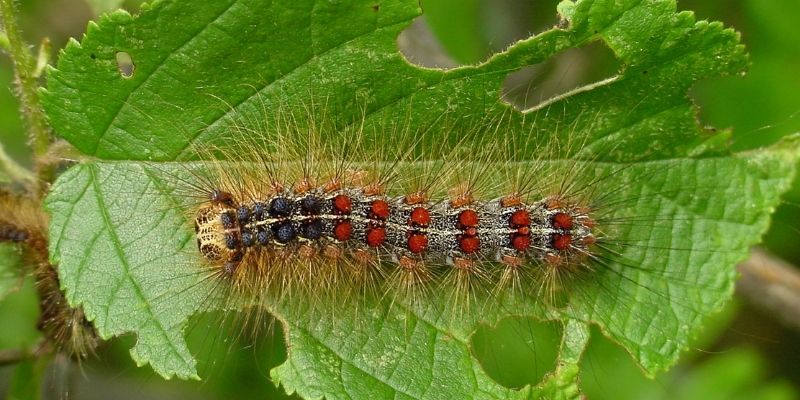
Spongy Moth Life Cycle
Like many insects, Spongy moths have four distinct life stages: egg, larva (caterpillar), pupa, and adult (moth). In August, adult females lay eggs in masses of 100-1000 eggs in beige, velvet/spongy material, inspiring their common name. We’ll find egg masses on an impressive diversity of surfaces both well-hidden and not, from tree trunks to buildings, mail boxes to rocks.
Tiny gray caterpillars with characteristic hairs emerge in spring just as leaves are expanding. Here in the Finger Lakes, we often see them in mid to late May. If the first tree the caterpillar climbs is not delicious, they ‘balloon’ on the wind, like a kite from a single, strong thread of silk. They feed for five to six weeks once they find their buffet.
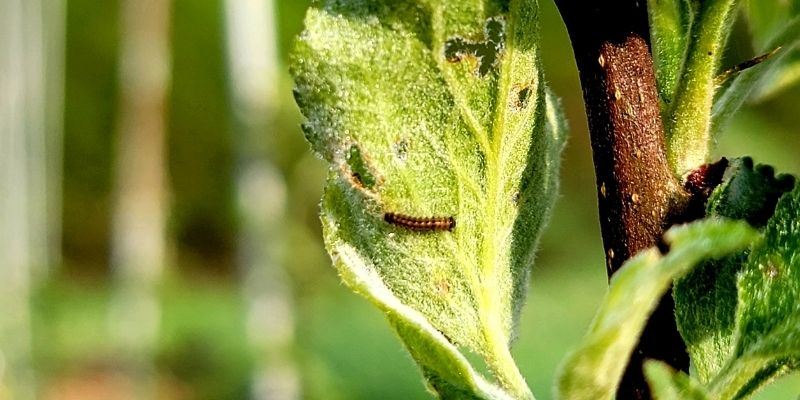
As they grow, Spongy moth caterpillars pass through 5 or 6 substages known as ‘instars.’ The first three instars feed during the day and cause little damage. By the fourth instar, they feed at night and hide on rough bark by day. Approximately 90% of the feeding damage caused by larvae is done by the last two instars: one caterpillar can consume up to 1 square meter of foliage each day.
Caterpillars pupate in brown structures the size of a peanut. By late July, the emerging adult moths emerge. Creamy with toffee splotches, they do not even have mouth parts, since they live only long enough to mate and lay eggs. Females are slightly more pale as well as more large, up to 1.5 inches long.
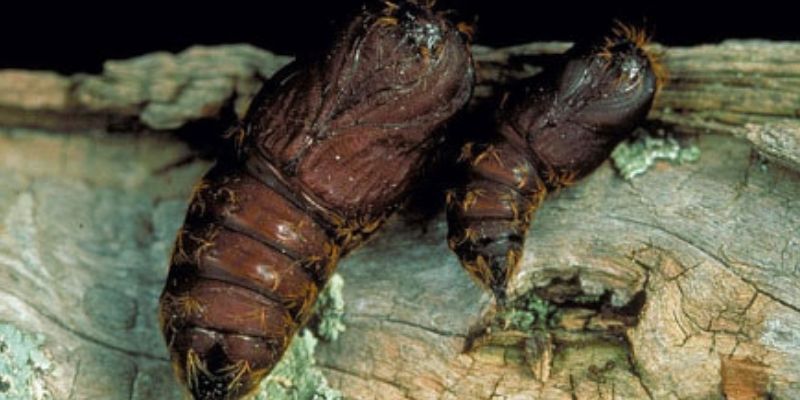
Approaching Spongy Moths Organically
Scrape & Spray Spongy Moth Eggs
Spongy moths spend ~75% of their life cycle as eggs. We destroy egg masses August through April! You can scrape off the eggs mass into a container of soapy water, leaving them there several days to be sure they don’t survive. Alternatively, egg masses can be sprayed with a dormant horticultural oil to effectively suffocate them. This is by far the most efficient method and effective method.
Pros: eggs are easiest life stage to control; affect is species specific
Cons: if you’re scraping a lot, wear a mask: the little fibers making the egg mass ‘spongy’ are very sharp and can irritate skin as well as our respiratory tract. If you’re scraping, you’re inhaling, sigh ~

Squish & Scrape Spongy Moth Larvae
The smaller the caterpillars, the easier they are to squish! If you’re not into the squish method, scrape or pluck them off and toss them into soapy water to drown.
Pros: affect is species specific
Cons: as caterpillars get larger, squishing can become more revolting (lol!)
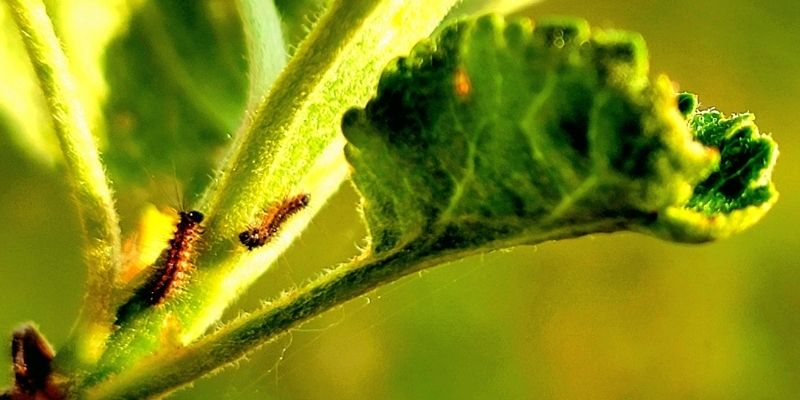
Physical Barriers for Spongy Moth Larvae
Sticky Tree Barrier Bands
are best engaged as an early season preventative measure for larger trees. Several weeks before we expect emergence (late April here in the Finger Lakes), we place sticky bands around the tree’s trunk to catch caterpillars as they hatch and crawl. These bands can be bought or made at home using common household materials. On a dry day, we create a 4 to 6-inch band of duct or packing tape with the adhesive touching the bark 4 feet high, preventing them from crawling under the trap, smearing a sticky material like Tanglefoot or petroleum jelly in a 2-inch band on top of the tape to catch the caterpillars. For more detailed instructions, hop on University of Wisconsin’s site. As rains fall, check in a replace the sticky substance as needed.
Pros: Tall trees that are challenging to spray benefit from sticky barriers. Additionally, there is less risk to other caterpillar species as it takes advantage of spongy moth behavior.
Cons: This method can be dangerous to birds as they can get stuck in the band, though you can top with chicken wire to prevent them getting stuck. Frequent monitoring is needed to prevent the sticky band from getting too gummed up (or too washed out) to be effective. Also, this method works best with larger caterpillars as the younger caterpillars don’t exhibit the climbing up and down behavior.
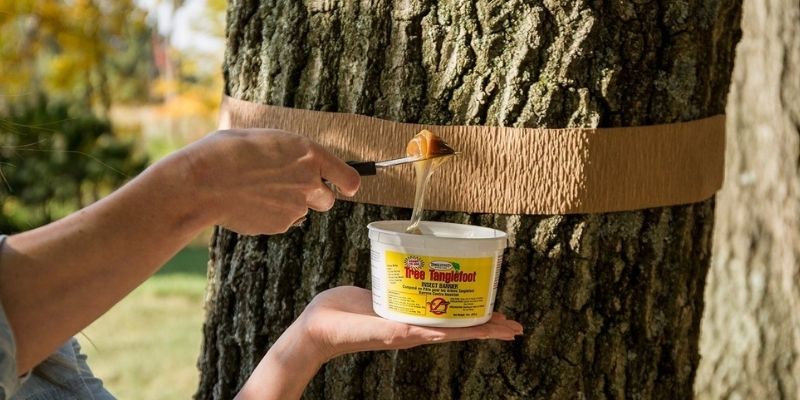
Non-Sticky Barrier Bands
As caterpillars grow about an inch long in mid-June, they travel down the trunk to hide from predators during the day. Similar to sticky traps, burlap barrier band traps take advantage of this behavior. Their construction is simple: cut a strip of burlap 12 to 18 inches, long enough to reach around the tree with several inches overlap. With a string tied around the center of the band, the top six inches flop over, making a convenient place for caterpillars to hide. Check your burlap band daily in the late afternoon, plucking all caterpillars into soapy water to drown. If you’re sensitive to their often irritating hairs, wear gloves. For more detailed instructions, University of Wisconsin will not disappoint!
Pros: Burlap bands often look nicer than the sticky bands —- with less potential risk to birds.
Cons: Daily caterpillar removal can be a hassle! This strategy works best with larger caterpillars as the younger caterpillars don’t exhibit the climbing up and down behavior.
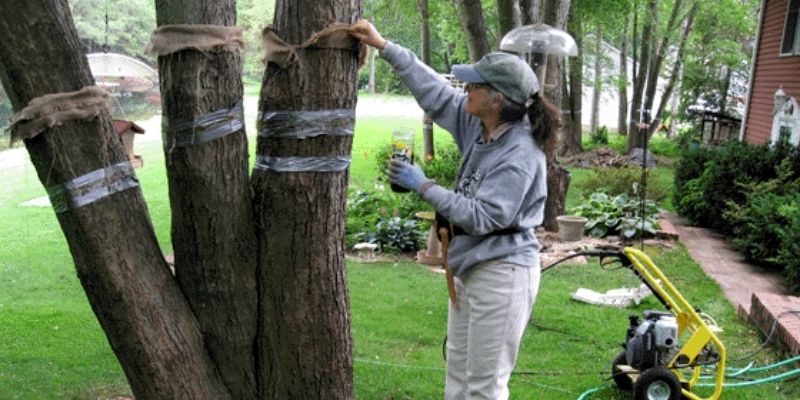
Organic Sprays for Spongy Moth
Bacillus thuringiensis kurstaki also known as Bt or Btk
Widely available and OMRI (Organic Materials Resource Index) listed, this bacterium, when ingested by caterpillars, has the approximate effect of melting their digestive tract. Bt is by far most effective on young caterpillars. Not specific to spongy moth, you may end up killing a lot more types of caterpillars with Bt than you’d hope. On large trees this is a very real concern; on young apple trees where you can easily reach all leaves, this is a much smaller concern.
Pros: Bt only harms caterpillars actively feeding on leaves treated. Bt is very safe for people, invertebrates and other pollinators.
Cons: Bt is not specific to spongy moth, so you may end up killing a lot more types of caterpillars than you’d hope.
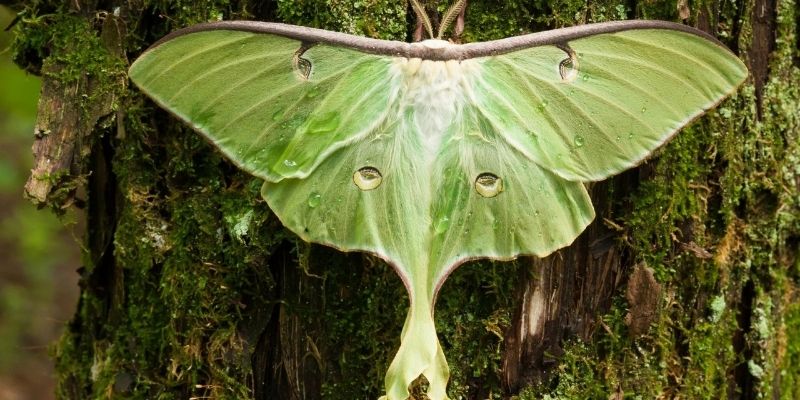
Spinosad
More effective for larger caterpillars than Bt, Spinosad is available in several OMRI listed products and once dry it will not harm beneficial insects. It’s a contact pesticide so it must come in contact with the caterpillars to control them.
Pros: If you have larger spongy moths and you’re very concerned about defoliation — and squishing/drowning is not an option, this is one to consider.
Cons: Since spinosad is not a species-specific pesticide, all the cons of Bt apply here as well. We recommend only using it to protect a super loved ornamental or fruit tree if you’ve missed the window for Bt. We try to never apply when pollinators are active.
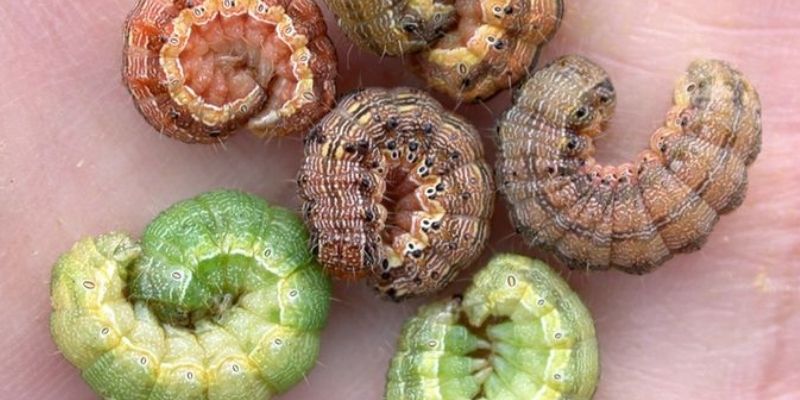
If you’re struggling with Spongy moths, you’re not alone and we’re right there with you, Friends.
As we’re grappling with our options, we often return to these words from E O Wilson:
Look closely at nature. Every species is a masterpiece, exquisitely adapted to the particular environment in which it has survived. Who are we to destroy or even diminish biodiversity?
~ E O Wilson
Sow Seeds & Sing Songs,
& the whole Fruition crew
